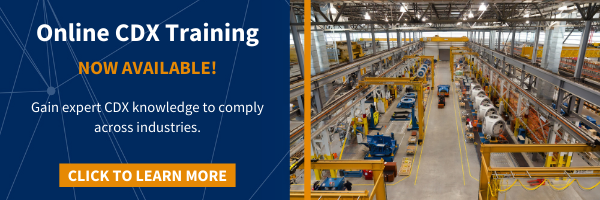With frequently changing regulations, compliance reporting can feel like a moving target. As soon as one regulation is satisfied, another comes along, requiring manufacturers to go back to the supply-chain for answers. Suppliers dealing with frequent customer requests are having to re-analyze their products repeatedly to provide answers on the various materials their products contain.
Having a full materials declaration (FMD) can make your compliance reporting easier. But how can a business best create an FMD? In the automotive industry, the International Material Data System (IMDS) rules the roost. But what about for other industries? This is where the Compliance Data Exchange (CDX) becomes a powerful tool.
Regulation-Centric vs. Product-Centric Compliance
When it comes to compliance reporting, regulation-centric reporting can be an easy trap to fall into. In regulation-centric reporting, you comply to regulations one-by-one. If a customer needing to meet REACH requirements comes to you asking if your product contains lead compounds, you analyze the product and give a yes-or-no answer. Reporting continues like this on a case-by-case basis, satisfying regulations as they come.
But with product-centric compliance reporting, you will already have the answer at your fingertips. In a product-centric reporting model, you create an FMD for your products, which means you know everything your product contains. Updates only need to be made when the content of your product changes, not when new regulations come along. Using a software like CDX simplifies the reporting process for the entire supply-chain and equips you with the needed answers immediately.
CDX Benefits for Suppliers
Using CDX simplifies your reporting process beyond FMDs. It helps you to input accurate data by constantly updating to reflect new regulations and providing checks and warnings. The software allows you to upload supporting documents, such as drawings, compliance declarations, Material Safety Data Sheets and Product Data Sheets. Professionals can also create a family of parts by uploading parts lists and entering the material information only one time, making the process easier the next time you need to input those same parts.
The actual logistics of reporting can also be made easier with CDX. If you have one MDS for a product, this MDS can be sent to multiple customers to satisfy requirements without having to be recreated. Additionally CDX allows users to upload XLM schema for their data.
The use of CDX is becoming more standard. Many companies are finding that their clients are starting to require — or at the very least expect — CDX part entry to be completed when parts are purchased from them. This may be added to the Supplier Quality Standards and must be complied with in order to do business with their company.
CDX makes compliance reporting easier across many industries, from heavy equipment to medical devices. Learn more about how CDX can benefit your company’s compliance efforts. For support in using CDX, explore our online training programs, which can give your compliance team the knowledge they need for complete product-centric compliance reporting.







